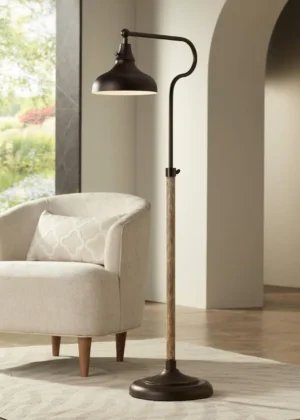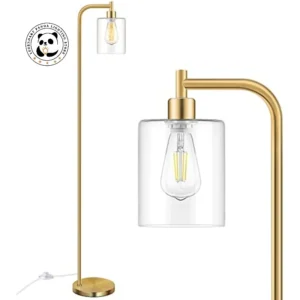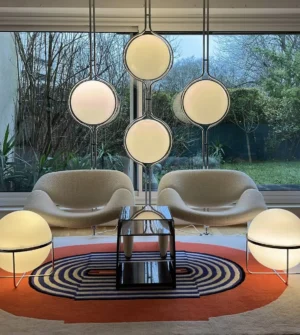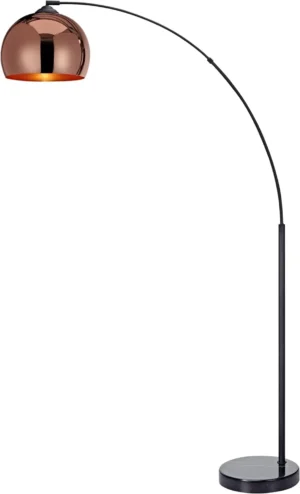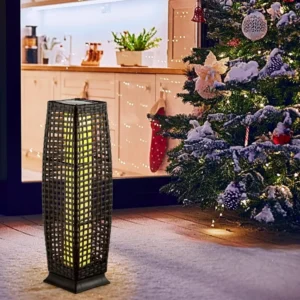Understanding the Appeal of Warm Lighting
When you walk into a room bathed in soft, warm lighting, something magical happens. Your shoulders relax, your breath deepens, and you immediately feel more at ease. Compare this to entering a space with harsh, bluish fluorescent lighting where everything feels clinical and unwelcoming. The difference isn’t just aesthetic—it’s deeply emotional.
Warm lighting creates an atmosphere of comfort and intimacy that cold lighting simply cannot match. Research consistently shows that warmer light temperatures can reduce stress levels and promote relaxation, which explains why we instinctively prefer it in our homes. The golden glow mimics the natural warmth of sunset, triggering our bodies to wind down and prepare for rest.
In this comprehensive guide, we’ll explore everything you need to know about creating warmer lighting in your home. From understanding the technical aspects of light temperature to practical solutions for every room, you’ll discover how to transform your space from stark and uninviting to cozy and welcoming. The connection between light and mood is powerful, and choosing the perfect arc floor lamp can be an excellent starting point for creating that warm, inviting atmosphere.
What is Color Temperature? Understanding Kelvin Ratings
To create warmer lighting in your home, you first need to understand what makes light “warm” or “cool.” This quality is measured using the Kelvin (K) scale, which quantifies color temperature. Contrary to what you might expect, lower Kelvin numbers represent warmer light (yellows, oranges, and reds), while higher numbers indicate cooler light (blues and whites).
It’s important to distinguish between color temperature and brightness. While brightness (measured in lumens) tells you how intense a light is, color temperature defines the quality or appearance of that light. A bright light can still have a warm color temperature, and a dim light can have a cool temperature.
Here’s a simple breakdown of the Kelvin scale:
- 1800K-2200K: Ultra warm white/amber (similar to candlelight or sunset)
- 2200K-3000K: Soft white/warm white (traditional incandescent bulbs)
- 3000K-4500K: Neutral/cool white (common in work environments and kitchens)
- 4500K-6500K: Daylight/cool white (promotes alertness, used in art studios)
The human eye naturally associates different color temperatures with different times of day. Warmer tones (below 3000K) signal evening and relaxation time, while cooler, bluer light mimics daylight and keeps us alert and focused. This is why the best lighting for ambient design typically features lower Kelvin ratings when the goal is to create a cozy atmosphere.
Selecting Warm Light Bulbs: Types and Recommendations
When shopping for light bulbs to create warmer lighting, the packaging often displays the color temperature in Kelvin. For a truly warm glow, look for bulbs in the 2200K-3000K range. Let’s explore the different types of warm light bulbs available:
Incandescent Bulbs
– Natural warm glow (around 2700K)
– Excellent color rendering
– Inexpensive upfront cost
– Drawbacks: energy inefficient, shorter lifespan, generate heat
LED Warm White/Soft White
– Available in 2200K-3000K range
– Energy efficient (uses 75-80% less energy than incandescent)
– Long-lasting (15,000-25,000 hours)
– Initially more expensive but more economical over time
– Look for “warm white,” “soft white,” or specific Kelvin ratings
LED Filament Bulbs
– Combine LED efficiency with vintage incandescent aesthetics
– Visible “filaments” create visual warmth beyond just the light quality
– Perfect for exposed bulb fixtures
Halogen Bulbs
– Slightly more efficient version of incandescent technology
– Very warm light quality (around 2800K)
– Better color rendering than standard LEDs
– Moderate lifespan and energy usage
Smart/Tunable LEDs
– Adjustable color temperature to suit different needs or times of day
– Can be programmed to shift warmer in evenings
– Often controllable via smartphone apps
Beyond just the technology, look at the bulb’s design and finish. Bulbs with amber-tinted glass or frosted finishes can enhance the warmth of the light. Visible filament designs (either real in incandescent or simulated in LED) add a visual warmth element that complements the actual light temperature.
For maximum flexibility in creating cozy spaces, consider exploring dimmable arc floor lamps that allow you to adjust not just the color temperature but also the intensity of your lighting.
Arc Floor Lamps: Perfect Solutions for Warm Ambient Lighting
Arc floor lamps stand out as exceptional tools for creating warm ambiance in any room. Their unique design allows light to cascade from above while keeping the fixture itself elegantly positioned to the side, creating a sense of intimate illumination without the harshness of direct overhead lighting.
What makes arc floor lamps particularly effective for warm lighting:
- Adjustable height and reach: Position the light exactly where you need it for perfect ambient illumination
- Versatile placement options: Can be placed behind seating to create a cozy pool of light without glare
- Directional light: Creates focused warm zones rather than flooding an entire space with light
- Variety of shade options: Many arc lamps feature shades that diffuse and warm the light quality
Modern arc floor lamps often include dimming capabilities, allowing you to adjust not just the direction but also the intensity of light. When dimmed, even slightly cooler LEDs take on a warmer appearance, enhancing the cozy effect.
The curved design of arc lamps also introduces an element of visual flow and movement that contributes to a relaxed atmosphere. For maximum warmth, look for arc lamps with brass, copper, or gold arc floor lamp finishes that naturally complement and enhance warm lighting with their reflective properties.
When positioning an arc lamp, consider placing it to illuminate conversation areas, reading nooks, or architectural features you want to highlight with warm light. The dramatic curve of the lamp itself becomes part of your decor, adding visual interest even when the lamp is turned off.
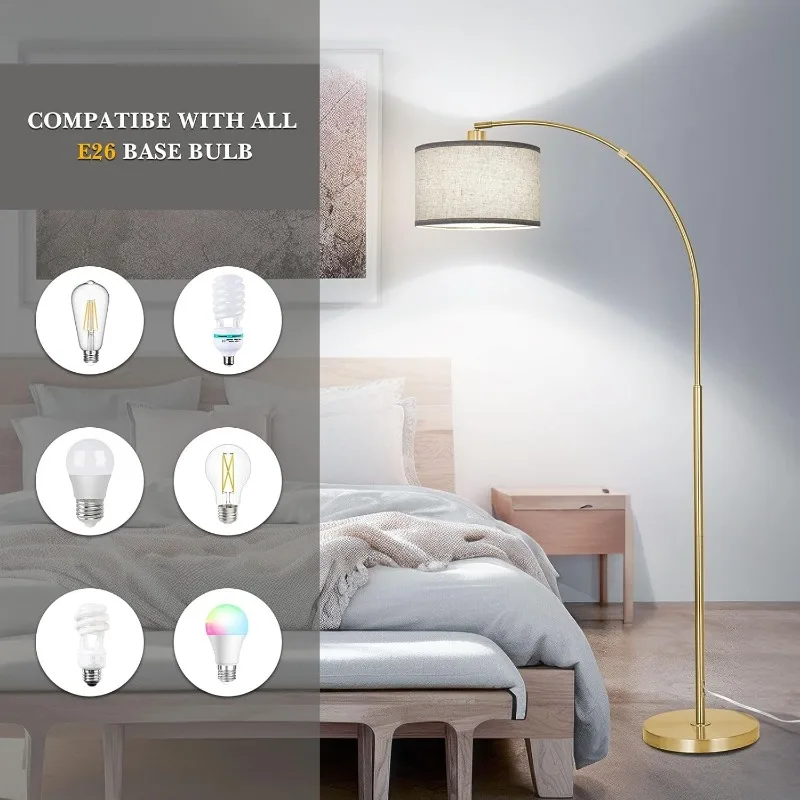
Mastering Layered Lighting for Maximum Warmth and Comfort
Creating truly warm and inviting spaces requires more than just installing warm-toned bulbs. The secret lies in layering different light sources to add depth, dimension, and visual interest. This approach allows you to create a cohesive atmosphere while addressing different functional needs within the same space.
Ambient Lighting (General Illumination)
– Provides the base layer of light that fills the room
– Best achieved with ceiling fixtures, large arc floor lamps, or torchiere lamps
– Ideally dimmable to adjust the overall warmth of the space
– Choose fixtures that cast light upward or outward to avoid harsh downlighting
Task Lighting (Functional Light)
– Illuminates specific activities like reading, cooking, or working
– Desk lamps, reading lamps, under-cabinet lights
– Can be slightly cooler than ambient lighting (3000K) while still feeling warm
– Position to minimize shadows on work surfaces
Accent Lighting (Decorative Elements)
– Highlights architectural features, artwork, or decorative objects
– Wall sconces, picture lights, small table lamps, string lights
– Often the warmest layer (2200K-2700K) to create visual interest
– Creates the perception of “pools” of warm light throughout a space
The magic happens when you combine these layers. For example, a living room might have a dimmable overhead fixture providing gentle ambient light, an arc floor lamp casting warm light over a seating area, a reading lamp beside a favorite chair, and small table lamps adding glowing accents on side tables.
The key to successful layering is varying the height, intensity, and distribution of light sources. This creates natural shadows and highlights that mimic the complex lighting patterns we find in nature, making spaces feel more organic and comfortable. Effective warm lighting for living rooms often combines all three layers for maximum coziness.
Using Dimmers for Instant Warmth and Flexibility
One of the most effective ways to instantly create warmer lighting is to install dimmers. When you dim a light, it naturally shifts toward the warmer end of the spectrum – much like the sun appears warmer as it sets. This simple adjustment can transform the mood of a room within seconds.
Dimmers come in several varieties:
- Standard wall dimmers: Replace existing light switches to control hardwired fixtures
- Plug-in dimmers: Connect between a lamp and the wall outlet for simple retrofit
- Smart dimmers: Control via smartphone or voice commands, often programmable
- Integrated dimmers: Built into the lamp itself, like those found in many high-end arc floor lamps
When using dimmers with LED bulbs, compatibility becomes important. Look for:
– LEDs specifically labeled as “dimmable”
– Dimmers rated for LED use (older dimmers may cause flickering)
– A compatible dimming range (some LEDs only dim to 20% rather than nearly off)
A common mistake is installing a single dimmer for all lights in a room. For maximum flexibility, consider independently dimming different lighting layers. This allows you to create contrast – perhaps dimming ambient lighting while keeping task lighting brighter, or turning accent lights up while lowering overhead illumination.
LED arc floor lamps with built-in dimming capabilities offer an elegant solution, providing energy efficiency along with the warm ambiance of adjustable lighting. The best modern options include smooth dimming curves that mimic the familiar warmth progression of traditional incandescent bulbs.
Choosing Fixtures and Shades that Enhance Warmth
The fixtures and shades you select play a crucial role in the perceived warmth of your lighting, regardless of the bulb inside. Materials, colors, and designs all influence how light is filtered, reflected, and distributed throughout your space.
Fixture Materials that Enhance Warmth:
– Brass, copper, and bronze: Reflect light with a golden undertone
– Wood elements: Add natural warmth and texture
– Matte black: Creates dramatic contrast that makes warm light sources stand out
– Avoid: Chrome, stainless steel, and other cool-toned metals that can counteract warmth
Lampshade Selection for Maximum Warmth:
– Materials: Fabric (linen, cotton, silk), paper, natural fibers, and wood veneer diffuse light beautifully
– Colors: Cream, off-white, beige, amber, terracotta, and warm neutrals add warmth to any light passing through
– Thickness: Denser shades create more intimate pools of light while thinner materials allow more general illumination
– Shape: Wider shades spread light more evenly; narrower shades create focused beams
Light direction significantly impacts perceived warmth. Uplighting (light directed toward the ceiling) creates soft, bounced illumination that feels warmer than direct downlighting, which can create harsh shadows. Fixtures that combine both directions create balanced illumination.
Diffusers are another important element – they soften and spread light, reducing glare and harsh spots. Frosted glass, fabric, or paper diffusers transform even relatively cool LED light into something softer and more inviting.
For a cohesive look, consider marble base arc floor lamps that pair warm-toned metals with natural stone, creating a sophisticated foundation for warm lighting elements while adding textural interest to your space.
Quick DIY Solutions for Warming Existing Lighting
Not ready for a complete lighting overhaul? These DIY approaches can transform your existing lighting to create a warmer atmosphere:
1. Add Color Temperature Orange (CTO) Gels
– Purchase theater-grade lighting gels (available online)
– Cut to size and attach to existing cool-toned light fixtures
– Use heat-resistant clips for hotter bulbs or double-sided tape for LEDs
– Safety note: Keep gels away from hot bulb surfaces
2. Upgrade or Add Lampshades
– Replace cool-white or clear glass shades with fabric or paper alternatives
– Add clip-on shades to exposed bulbs
– Choose warm-toned materials like amber glass, linen, or parchment
– Make sure shades maintain proper clearance from bulbs to prevent fire hazards
3. Use Strategic Reflection
– Paint nearby walls in warm tones (soft whites, creams, blush pinks, gentle terracottas)
– Add mirrors or metallic accents with warm undertones to bounce and amplify warm light
– Position lamps to reflect off warm-colored surfaces
4. Temporary Solutions for Rentals
– Use plug-in dimmers with existing lamps
– Swap landlord-installed bulbs with warm alternatives (store originals to replace when moving)
– Add floor and table lamps to supplement and soften harsh built-in lighting
– Use removable warm-colored wallpaper to create reflective surfaces
These quick fixes can be particularly effective when incorporating natural wood elements alongside your lighting changes. The combination of warm light with natural textures creates a cozy, grounded feeling that’s instantly inviting.
Room-by-Room Guide to Creating Warmer Lighting
Each room in your home serves different purposes and requires tailored lighting approaches to maximize warmth and functionality:
Living Room
– Ideal Temperature: 2200K-2700K for ultimate coziness
– Key Strategies:
* Position an arc floor lamp behind seating areas for ambient overhead light
* Add table lamps at different heights for layered illumination
* Include accent lights to highlight artwork or architectural features
* Install dimmers on all overhead fixtures
– Avoid: Recessed downlights as the only light source
Bedroom
– Ideal Temperature: 2200K-2700K for relaxation, 2700K-3000K for reading
– Key Strategies:
* Use bedside lamps with fabric shades for gentle diffused light
* Consider wall-mounted fixtures to free up nightstand space
* Add a dimmer switch for overhead lighting
* Position lighting to avoid direct glare when lying in bed
* Incorporate a warmer “wind-down” light routine before sleep
Dining Room
– Ideal Temperature: 2200K-2700K for intimate meals, 2700K-3000K for family dinners
– Key Strategies:
* Hang pendant lights 30-36 inches above the table
* Choose fixtures with downward-facing diffusers to focus warm light on the table
* Add complementary wall sconces set to a lower brightness
* Consider candles for ultra-warm accent lighting during special meals
Kitchen
– Ideal Temperature: 2700K-3000K (balance between warmth and functionality)
– Key Strategies:
* Use under-cabinet lighting for functional task illumination
* Choose warmer overhead lighting than typically recommended
* Add pendant lights over islands or eating areas with warmer temperatures than work areas
Bathroom
– Ideal Temperature: 2700K-3000K for general use, 3000K-3500K around mirrors
– Key Strategies:
* Install light fixtures on both sides of mirrors to minimize shadows
* Use separate circuits for task and ambient lighting
* Consider a warmer light option for relaxing baths versus morning routines
For living spaces in particular, specialized arc lamps provide excellent solutions for creating designated zones of warmth while maintaining an elegant aesthetic.
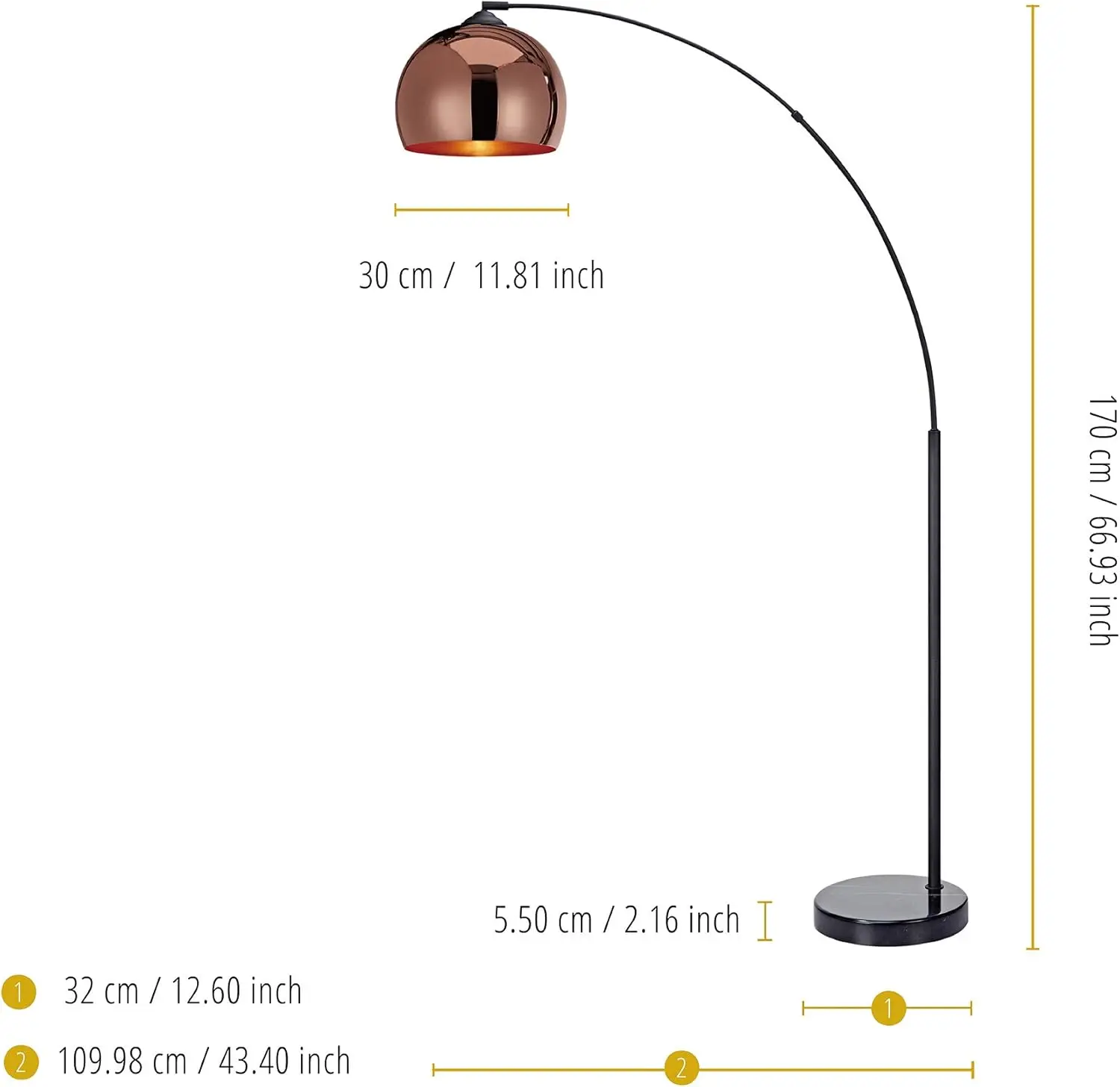
Enhancing Lighting Warmth with Complementary Design Elements
Lighting doesn’t exist in isolation – it interacts with every surface and object in your home. By strategically selecting complementary design elements, you can amplify the warmth of your lighting scheme:
Wall Colors and Finishes
– Warm neutrals (creams, beiges, warm grays) reflect warm light beautifully
– Matte finishes diffuse light more gently than glossy surfaces
– Textured walls create subtle shadow play that enhances warmth
– Even white walls can be warm – choose whites with yellow, red, or brown undertones
Furniture and Textiles
– Natural materials like wood, leather, and wool naturally enhance warm lighting
– Textured fabrics create depth by catching light at different angles
– Layer textiles of varying weights and weaves for maximum coziness
– Choose warm-toned upholstery that complements your lighting scheme
Metallic Elements
– Brass, copper, bronze, and gold accents reflect and enhance warm light
– Antique or brushed finishes provide warmth without harsh reflections
– Strategic placement of metallic picture frames can bounce warm light back into a room
– When selecting lighting fixtures, choosing brass over chrome often creates a warmer aesthetic
Natural Elements
– Wood (especially medium to dark tones) absorbs and softens light
– Stone with warm undertones like travertine or sandstone complements warm lighting
– Plants create organic shadows and filtered light effects
– Natural fiber baskets and accessories add textural warmth
Fire Elements
– Candles provide the warmest possible light temperature (around 1800K)
– Fireplaces create dynamic, ultra-warm light
– Even flameless LED candles designed to mimic fire can enhance ambiance
When these elements work in concert with your lighting choices, they create spaces that feel cohesive, inviting, and deeply comfortable. The warmth becomes multidimensional – not just a quality of light but a holistic sensory experience.
Creating Special Moments with Ultra-Warm Accent Lighting
While general warm lighting creates a comfortable backdrop, strategically placed ultra-warm accent lighting (1800K-2200K) can transform ordinary spaces into extraordinary ones. These special touches create focal points that draw people in and create memorable experiences.
Consider creating a reading nook with a dedicated warm-toned lamp that bathes just that corner in a golden glow. The contrast between this space and the rest of the room makes it feel like a special retreat. Similar effects can be created around conversation areas, meditation spaces, or anywhere you want to encourage relaxation and connection.
Accent lighting is particularly effective when highlighting objects with warm tones – wooden sculptures, bronze figurines, amber glassware, or richly colored artwork. The light amplifies their natural warmth, creating a visual harmony that’s deeply satisfying. Even simple objects can become statement pieces when bathed in the right light.
Seasonal adjustments to accent lighting can keep your home feeling fresh throughout the year. In winter, emphasize ultra-warm accents to combat the cold and darkness outside. In summer, you might reduce these elements slightly while maintaining the overall warm scheme.
Evening transitions represent another opportunity for ultra-warm accenting. Program smart lighting (or manually adjust) to shift progressively warmer as the evening advances, mimicking the natural progression of sunset. This subtle change signals to your body that it’s time to wind down.
Knowing how to position arc floor lamps for these accent effects allows you to create dramatic pools of warm light exactly where they’ll have the most impact, transforming your everyday spaces into extraordinary retreats.
Is Cool Light Ever Appropriate? Finding Balance
While this guide focuses on creating warmer lighting, there are legitimate reasons to incorporate cooler temperatures in specific situations. The key is knowing when and where to use them, and how to create harmonious transitions.
When cooler light serves a purpose:
– Task-oriented spaces requiring visual clarity (home offices, craft rooms)
– Makeup application areas where accurate color rendering is essential
– Kitchens where food preparation requires precise visual information
– Spaces where you need to maintain alertness during daytime hours
Rather than thinking in terms of “all warm” or “all cool,” consider creating temperature zones within your home. Your kitchen might feature slightly cooler task lighting over countertops (3000K-3500K) while maintaining warmer ambient lighting (2700K) for the overall space. This provides function without sacrificing atmosphere.
Tunable lighting represents an ideal solution, allowing spaces to serve multiple purposes. These systems can shift from energizing cooler temperatures during productive hours to relaxing warm tones in the evening. Many smart bulbs and fixtures offer this functionality through simple app controls.
When mixing temperatures, create gradual transitions rather than stark contrasts. For example, if your kitchen has 3000K lighting but opens to a living area with 2700K lighting, consider 2850K in the transitional space to create a smooth progression.
Adjustable arc floor lamps provide practical flexibility, allowing you to adapt your lighting to different activities while maintaining a cohesive design aesthetic throughout your home.
Adjustable Arc Floor Lamp, Bronze Arc Floor Lamp
Price range: $440.95 through $558.52 Select options This product has multiple variants. The options may be chosen on the product pageBrass Arc Floor Lamp, Contemporary Arc Floor Lamp, LED Arc Floor Lamp
Price range: $490.72 through $522.04 Select options This product has multiple variants. The options may be chosen on the product pageChrome Arc Floor Lamp, LED Arc Floor Lamp
Price range: $304.95 through $1,210.40 Select options This product has multiple variants. The options may be chosen on the product pageContemporary Arc Floor Lamp, Large Arc Floor Lamp, Marble Base Arc Floor Lamp
$224.94 Select options This product has multiple variants. The options may be chosen on the product pageLED Arc Floor Lamp, Rattan Arc Floor Lamp
$313.58 Select options This product has multiple variants. The options may be chosen on the product page- $1,003.85 Select options This product has multiple variants. The options may be chosen on the product page
The Environmental Impact: Energy Efficiency and Warm Lighting
There’s a common misconception that warm lighting necessarily means energy inefficiency. While this was once true when incandescent bulbs were the only option for truly warm light, modern technology has changed the equation.
Today’s LED technology offers excellent warm light options (2200K-3000K) that use up to 80% less energy than traditional incandescent bulbs. These energy-efficient alternatives last significantly longer too – up to 25 times the lifespan of incandescent bulbs – reducing waste and replacement costs.
When shopping for energy-efficient warm lighting:
– Look for the Energy Star certification
– Check the lumens (brightness) rather than wattage equivalent
– Verify the color temperature is in your desired range (2200K-3000K)
– Consider CRI (Color Rendering Index) – higher numbers (90+) provide more accurate color representation
Smart lighting systems further enhance efficiency by ensuring lights are only on when needed and at the appropriate brightness level. Features like occupancy sensing, scheduling, and remote control prevent energy waste while maintaining your warm lighting aesthetic.
The long-term cost analysis strongly favors efficient LED options despite higher upfront costs. For example, replacing five 60-watt incandescent bulbs with equivalent LED alternatives can save approximately $75 per year in energy costs alone, not including the reduced replacement frequency.
Interior Ivy’s collection of modern LED arc lighting options demonstrates that you don’t need to compromise on style or warmth to make environmentally responsible lighting choices.
Transforming Your Space: Before and After Warm Lighting
The transformation from cool, clinical lighting to warm, inviting illumination can completely reinvent how a space feels and functions. Consider these real-world scenarios:
Living Room Transformation
Before: A living room with a single overhead fixture using 5000K “daylight” bulbs created harsh shadows and a sterile atmosphere despite comfortable furniture and warm-toned décor.
After: Replacing the overhead bulbs with 2700K alternatives, adding a dimmable arc floor lamp behind the sofa, and incorporating two table lamps with fabric shades created depth and instantly made the room feel cozy and welcoming. The same furniture and décor suddenly looked rich and inviting.
Key transformation elements:
– Multiple light sources at different heights
– Warm temperature bulbs (2700K or lower)
– Dimmable options for flexibility
– Directional light that highlights textures and creates gentle shadows
Bedroom Transformation
Before: Recessed can lights with cool LEDs created an energizing rather than relaxing environment, making it difficult to wind down before sleep.
After: Wall-mounted sconces with 2200K bulbs beside the bed, combined with a small table lamp across the room, created a sanctuary-like atmosphere conducive to relaxation and rest.
Common challenges and solutions:
– Rental restrictions: Use plug-in wall sconces and lamps rather than hardwired options
– Budget constraints: Start by simply swapping bulbs before investing in new fixtures
– Mixed-use spaces: Install dimmer switches or use smart bulbs to adjust for different activities
The most dramatic transformations often come from layering multiple warm light sources rather than relying on a single solution. This creates visual interest through varied brightness levels and gentle shadow play.
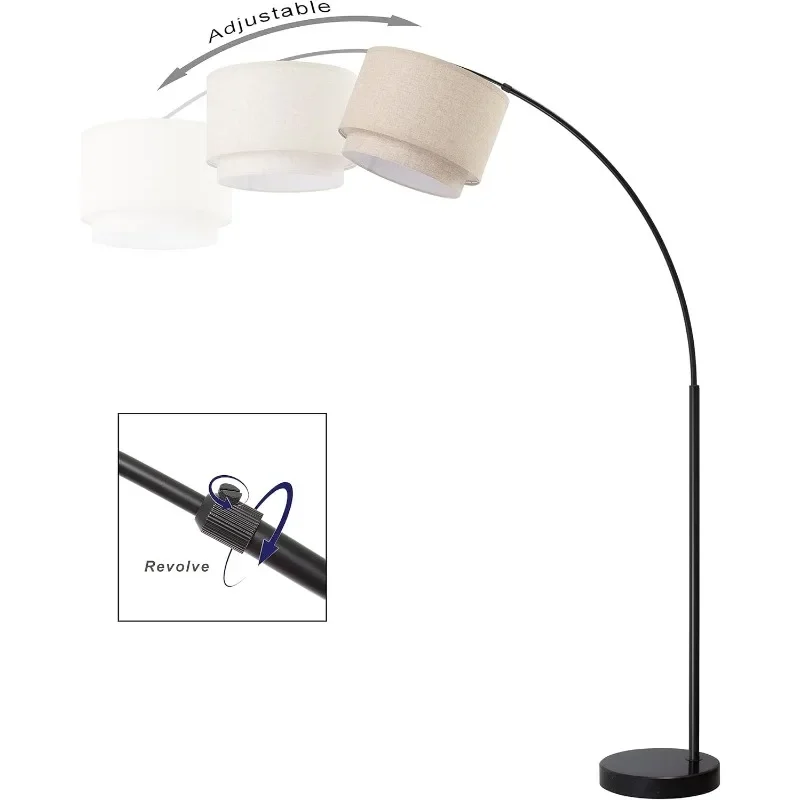
Choosing the Right Arc Floor Lamp for Your Warm Lighting Plan
Arc floor lamps stand out as versatile heroes in any warm lighting strategy. Their unique design allows them to provide overhead illumination without ceiling installation, making them perfect for renters or anyone wanting flexibility.
When selecting an arc floor lamp for your warm lighting plan, consider these key features:
Height and Reach
– Adjustable height options allow customization to your space
– Consider ceiling height and furniture arrangement
– Ensure the light source sits 60-72 inches from the floor for optimal distribution
– Look for adjustable arm reach to position light exactly where needed
Base Stability and Design
– Heavy marble or metal bases provide stability and prevent tipping
– Consider floor surface (carpet may require larger base)
– Look for designs where the base complements your existing décor
– Ensure cord management features for a clean appearance
Shade Materials
– Fabric or paper shades diffuse light more warmly than metal or glass
– Drum shades spread light more evenly while directional shades focus it
– Consider opacity – denser shades create more focused pools of light
– Look for shades with warm-toned liners for maximum warmth
Dimming Capabilities
– In-line switch dimmers offer basic control
– Foot dimmers allow hands-free adjustment
– Smart compatibility provides ultimate flexibility and integration
Arc lamps work particularly well when positioned behind seating areas, over dining tables, or above reading nooks. Their dramatic curves add visual interest even when not illuminated, making them both functional lighting and sculptural design elements.
For maximum effect, pair your arc lamp with other lighting fixtures at different heights. This layered approach ensures warm light at eye level, above, and below for a fully immersive warm environment. To evaluate if arc lighting is right for your space, learn more about whether arc floor lamps are effective for different room configurations and lighting needs.


